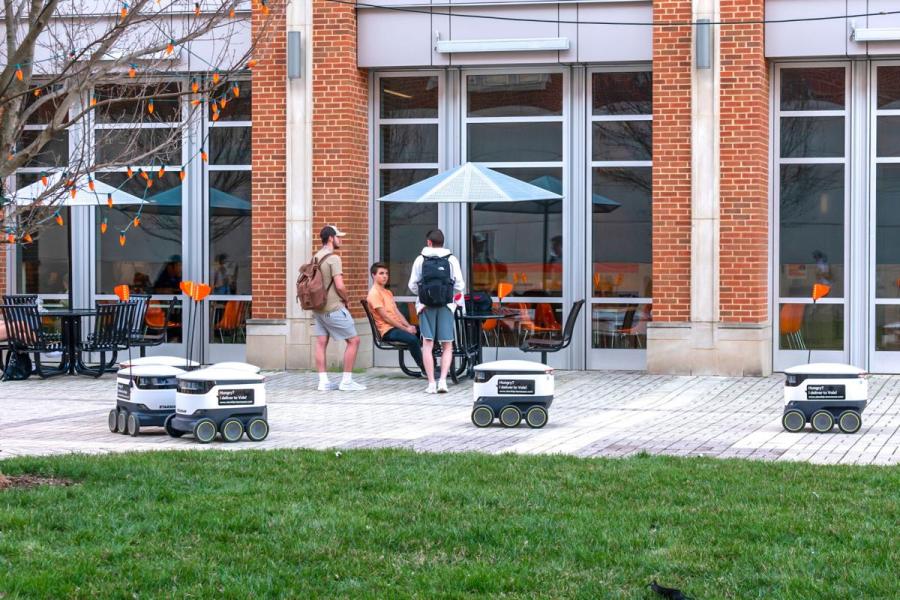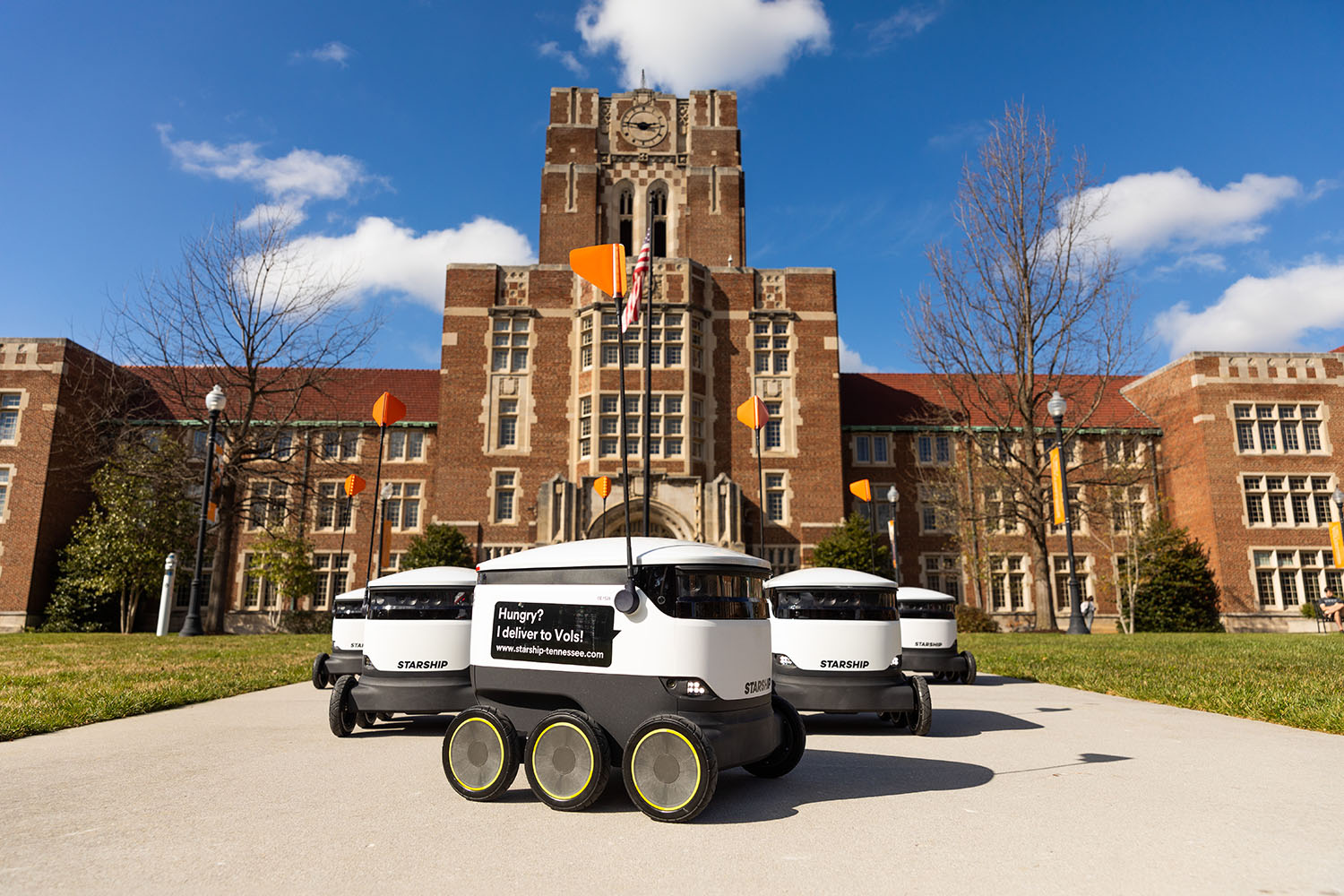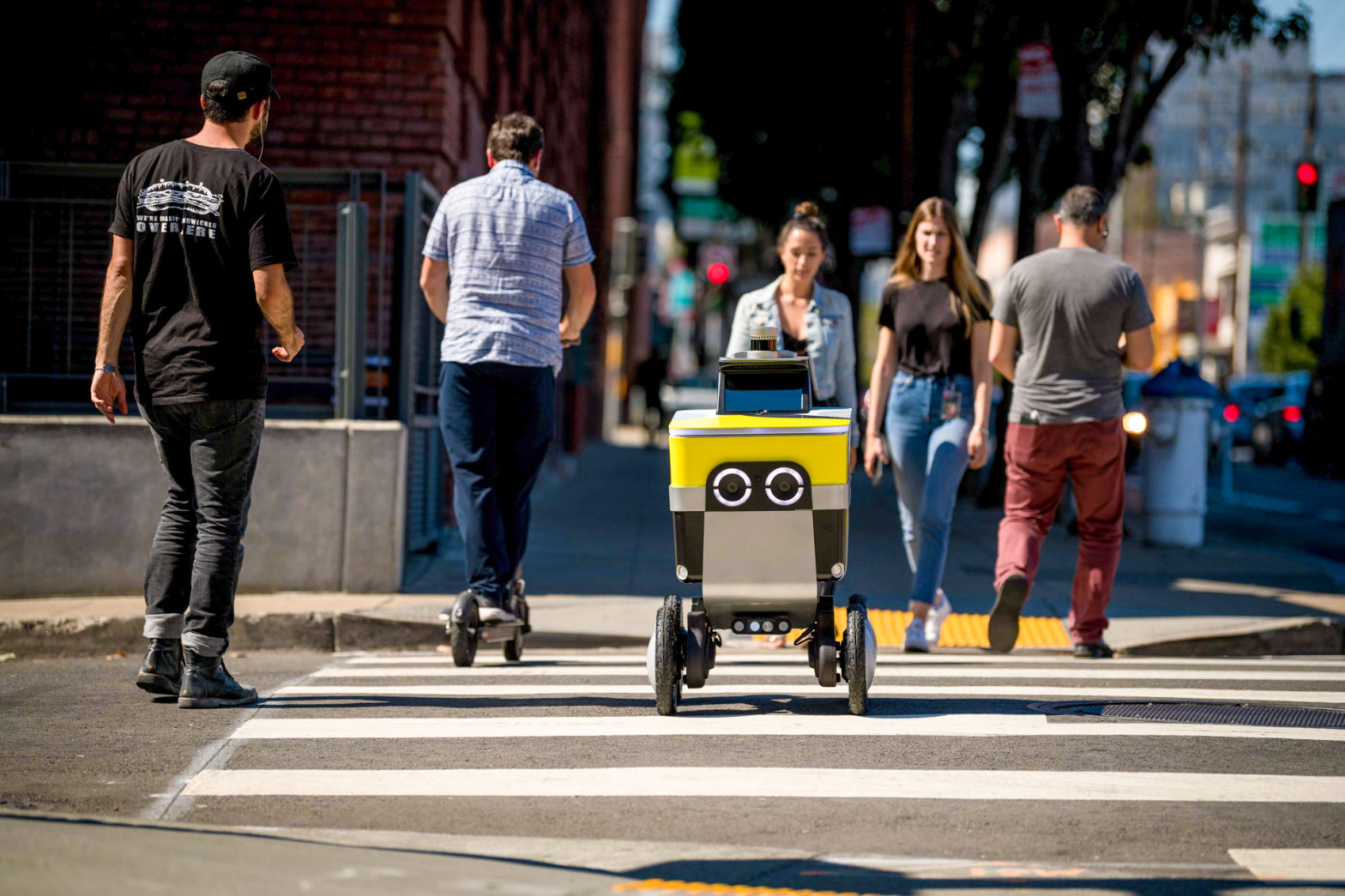Knoxville leaders explore use of delivery robots as autonomous services seek to expand

By KATE COIL
TT&C Assistant Editor
Following the successful rollout of food delivery robots on the University of Tennessee Knoxville campus in 2022, city leaders in Knoxville are now considering whether or not the technology is a good fit for the rest of the city.
The Knoxville City Council issued a moratorium on self-driving robotic delivery off campus in October, citing a need to further research the issue. Carter Hall, director of strategic policy and programs for the city, said the delivery model has worked well for UT.

“For on campus, things have gone really well,” Hall said. “UT officials reached out to the city with a plan in place for the university before they started initial testing where a person is walking around with the delivery robot. Part of their map of operations included some city right-of-way around the campus, which brought up some concerns. There were a lot of things to consider, so we entered into an MOU that made them stick to campus roads the way they wanted to and not operate on city streets without permission from the policy and engineering departments to do so. We’ve had no issues with robots going onto city right-of-way nor has there been an issue of them causing a car accident or safety concerns. They seem to work well and are being used a decent amount.”
However, what works well on the UT campus may not work so well elsewhere.
“The infrastructure is very different from campus to the city,” Hall said. “Our sidewalks tend to be older, narrower, and have a lot more cutouts for trees. In our downtown area, there are a lot of businesses with patios and railings that extend to the sidewalks.”
As a result, Knoxville officials issued a six-month robot delivery moratorium on autonomous robotic delivery. This is not the first time Knoxville officials have halted the rollout of a new technology-based product in the city to better regulate the industry; city leaders also temporarily halted the use of electric scooters until they could better understand the implications of the emerging industry. The city ended up developing an ongoing management program for the scooters to ensure they are used in a way that is of benefit to the city.
Hall said the city needs to look at a variety of issues before moving forward, including public safety on streets and sidewalks.
“For me it comes down to even if these things operating as they are supposed to, can our infrastructure accommodate this,” he said. “It’s not so much of a safety issue; they are safe. It’s more about whether this make sense where sidewalks are crowded in a busy downtown. There is also always the concern of what businesses contractually can work with the robots. If we are giving certain companies an edge over smaller businesses, is that something we want to contribute to? I don’t necessarily think cities should use the market as a regulatory force, but it behooves the city to know what they want and know how to operate it and regulate it based on that.”
City leaders have spoken with officials with Starship, the company who presently operates the delivery robots on the UT campus, and Hall said other stakeholder groups will also be invited to contribute to the discussion including the Mayors’ Council on Disability Issues, the city’s engineering department, and local businessowners. UT officials may also be asked to chime in with their experience on how the process as worked on campus.
Knoxville is not the first city to deal with the growing pains of expanding robotic delivery services. Many companies that once offered these delivery services only on college campuses are now wanting to expand their operations.
Chicago, Detroit, Miami, and Pittsburgh have all worked with companies to develop pilot programs to test out delivery services before allowing them to launch in their cities while leaders in San Francisco and Toronto outright banned the usage of delivery robots due to pedestrian safety issues.

Earlier this year, UberEats and Serve Robotics announced their intention to deploy more than 2,000 delivery robots in cities across the country sometime in 2024, once a pilot program in Los Angeles is completed. Amazon, FedEx, and Starship – who operate the delivery robots on UT’s campus – have also begun rolling out robotic deliveries in cities across the U.S., Japan, and UK, including a similar delivery program offered by FedEx on the University of Memphis campus. Amazon has also piloted autonomous delivery of packages in Franklin.
Tennessee is one of 16 states across the country to establish a formal policy about how food delivery robots can operate. Gov. Bill Lee signed into law Tennessee Code § 55-8-209, regulating personal delivery devices. Under the bill, such devices must have the ability to yield to the right of way of all other traffic, not reasonably interfere with either vehicle or pedestrian traffic, be equipped with lighting and identification, and cannot go above 10 miles per hour.
“At the end of the day, we have to ask what benefits do these things serve?” Hall said. “They may decrease road congestion, but they’re adding to road congestion. They may give businesses a few more sales. We need to see if we can maximize benefits, whatever they might be. It’s our job to do what’s best for Knoxville.”
Hall said the city may consider regulations such as only allowing deliveries to operate in certain areas of the city, especially since the robots are typically limited by a 3-mile delivery range to ensure food arrives hot and on time.
“It always comes down to what are the advantages for our citizens,” he said. “If the disadvantages or potential drawbacks are going to outweigh the benefits to the people who live in the city, I think it is the responsibility of a city to go ahead and regulate something. I understand not wanting to stifle innovation and new ideas, but not all new ideas are going to benefit citizens equally. If an idea is going to utilize city right-of-way and city property, I think a city should really be considering if they are benefitting from that use. It’s important to not be scared of technology and not to jump to the worst-case scenario with a lot of technology. Be realistic and have plans for the worst-case scenario.”
As new innovations continue to change the way citizens live and do business, Hall said it is important for city leaders to be thinking about how autonomous technology may affect their own communities.
“Fortunately, we often can see things pop up in other cities and decide we need to get ahead of this,” Hall said. “We may preemptively regulate something there isn’t a market for yet. It’s important to be forward thinking. The new thing about these robots is the autonomous nature of it. There will be similar things coming down the pike with autonomous vehicles, taxis, and other autonomous things that will be using city right-of-way. This is a little bit of a primer of how we start thinking about autonomous and AI devices in cities and Knoxville.”

